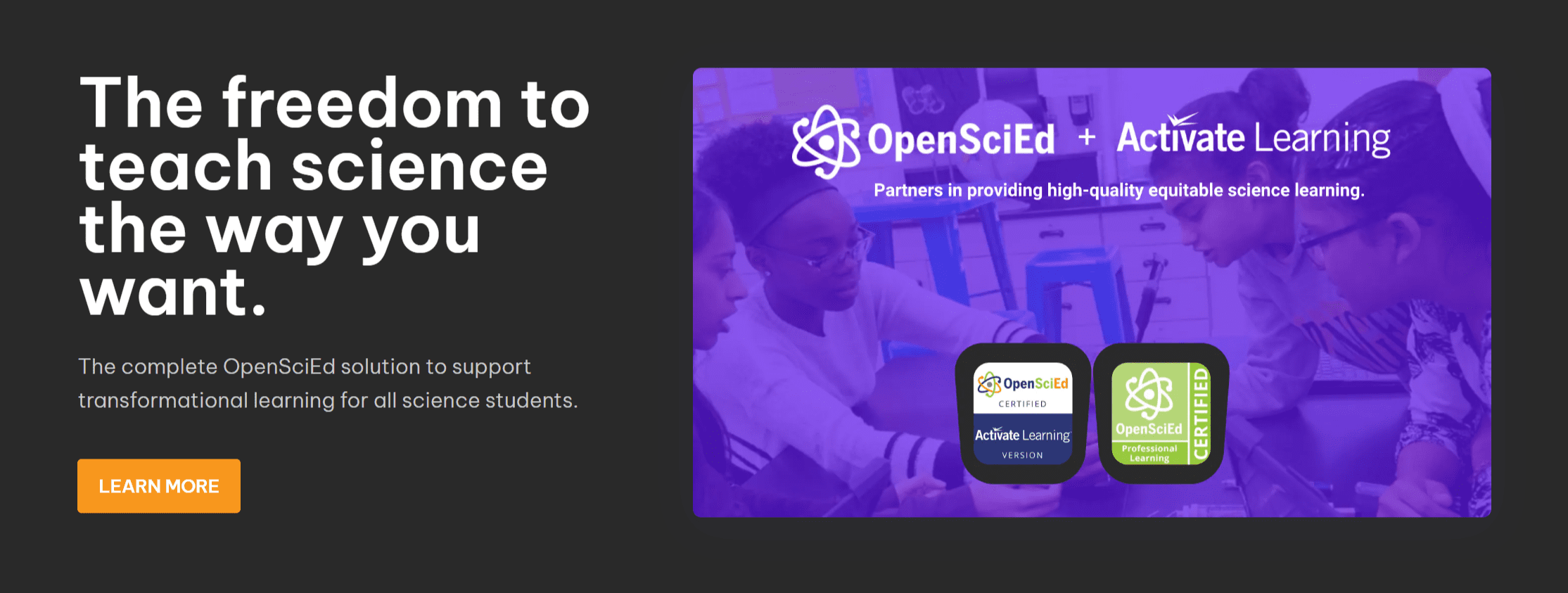How the Open Source Movement is Changing the Game for Science Teachers

STEM education must continually evolve to retain its relevance in a fast-changing world. Teachers, students, and parents have all been clamoring for new innovation and it appears that the open source movement might just provide that crucial catalyst that we so desperately need.
Why is Science Learning Ripe for Innovation?
In order to capture the minds of our young people, teachers need the freedom and flexibility in terms of curriculum to adapt their styles to the unique circumstances they find themselves in. We've written before about how STEM students want a deeper level of engagement and that a one-size-fits-all approach simply doesn't stack up in today's education landscape.
Science education needs to create opportunities for an open exchange of ideas so that students can learn about the principles of scientific thinking - empowering them to tackle any problem that comes their way. This is at the core of NGSS standards but in practice, it can be difficult to achieve if you don't have the sorts of low-cost resources that can offer equal opportunities to all classrooms regardless of demographic, purchasing power, or infrastructure.
It's for these reasons and more that the open movement is such a welcome addition to the ecosystem - so what precisely is the open movement?
"The open movement seeks to work towards solutions of many of the world's most pressing problems in a spirit of transparency, collaboration, re-use and free access. It encompasses open data, open government, open development, open science and much more. Participatory processes, sharing of knowledge and outputs and open source software are among its key tools. The specific definition of "open" as applied to data, knowledge and content, is set out by the Open Definition." (Open Data Handbook)
Understanding the Pillars of the Open Source Movement
To understand how the open movement is changing traditional STEM education, it's worth looking at the pillars underlying it - defining the tools that are giving educators the freedom and flexibility they need to transform the learning environment.
Open-Source Software
This refers to software that is released freely to the public without charging a licensing fee or a purchase fee. The copyright is waived and it becomes a public good for anyone to use as they please. This often results in highly collaborative efforts where communities come together to build tools that can benefit everyone.
In fact, some of the most popular software used by teachers and students today are open source such as Moodle, Open Broadcast Studio, and Edmodo.
Within STEM education specifically, open-source software can be extremely useful because it breaks through any financial barriers and brings high-quality tools to any institution that is resourceful enough to implement it. Research shows that adding these capabilities to a teacher's toolbox makes them a lot more effective over the long run.
What you do need to consider though is that you're not going to get the dedicated support and infrastructure that you might expect from a piece of software that you purchase, but that's a trade-off well worth making in some circumstances.

Open Source Education Resources (OSER)
Taking the open-source idea one step forward, you get teaching, learning, and research materials that are created with the sole purpose of being licensed for free so that the end user can own, share, and modify according to their needs. This highly-focused material aims to offer fully comprehensive curricula that offer cutting-edge content backed up by the latest in learning methodologies.
Many schools that don't have the resources to compete with others turn to these curricula to provide the level of education that they aspire to provide to all students - in the midst of very challenging circumstances. However, it's a mistake to think that the applications stop there. There is also lots of value to be found for all because the content is being continually updated and the collaborative nature brings a range of different perspectives into one cohesive structure.
OpenSciEd is an example of an OSER and it's the one that continues to push boundaries for STEM education as a whole.
Open Science
Open Science is a movement in the global science community that has significant implications for how science is being taught in classrooms across the globe. It aims to empower educators to prepare their students for the STEM careers of the future using open tools and resources that are tailor-made for today's requirements.
By making these resources accessible to all levels of society, it helps to share knowledge more broadly, encourages greater collaboration between key players, and reduces the cost of high-quality science education.
There are 8 pillars of open science that encapsulate the principles that this methodology celebrates:
- FAIR Data: making key scientific data findable, accessible, interoperable, and reusable.
- Research Integrity: maintaining high levels of ethical and professional standards.
- Next Generation Metrics: going beyond citation counts and thinking deeper about the impact of research.
- Future of Scholarly Communication: shifting the publishing model to be fully open-access for all.
- Citizen Science: empowering the public to participate in the scientific endeavor.
- Education and Skills: addressing key skills shortages for the twenty-first century and beyond.
- Rewards and Initiatives: celebrating best practice and building healthy feedback loops.
- EOSC: linking together interoperable science infrastructures for better collaboration.
When you put these together (Open Software, Open Source Education, and Open Science) you have an immensely powerful tool for engaging students in immersive learning - as detailed in a recent edition of our Activate OpenSciEd newsletter. The Open Science movement is leading the way to a much-needed transformation in STEM education.
How Can Science Teachers Embrace the Open Movement?
Educators who want to leverage the power of the open movement must start with strong NGSS-aligned curricula like OpenSciEd which provide the freedom and flexibility for teachers to embrace the movement in a way that works for them and their students. But merely having the tools on their own isn't enough to change the paradigm. Teachers need support, a professional learning community, and a bank of high-quality resources that work for their needs.
Here at Activate Learning, we are proud partners with OpenSciEd and we provide this much-needed support across many different levels. We provide the curriculums, science kits, and materials that empower teachers to embrace the future of STEM education. Find out more about our services here or check out our new OpenSciEd newsletter which is a great place to start if you're coming to this for the first time.
It's time to embrace the future of STEM learning by leveraging open resources for ultimate freedom and flexibility so that you can teach science in the way that you really want to. The possibilities are endless if you're willing to adapt and embrace the new paradigm.
* * * * *
.




![Header - What is AI Literacy [PHOTO: Middle school students work together during AI For Good Summer Camp. CREDIT: Indiana University Bloomington]](https://activatelearning.com/wp-content/uploads/bb-plugin/cache/Header-What-is-AI-Literacy-1024x512-panorama-1430895e49b87c3ea9d3c12b24687295-.png)